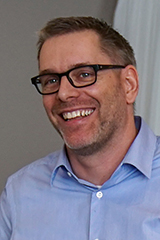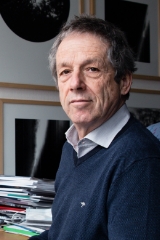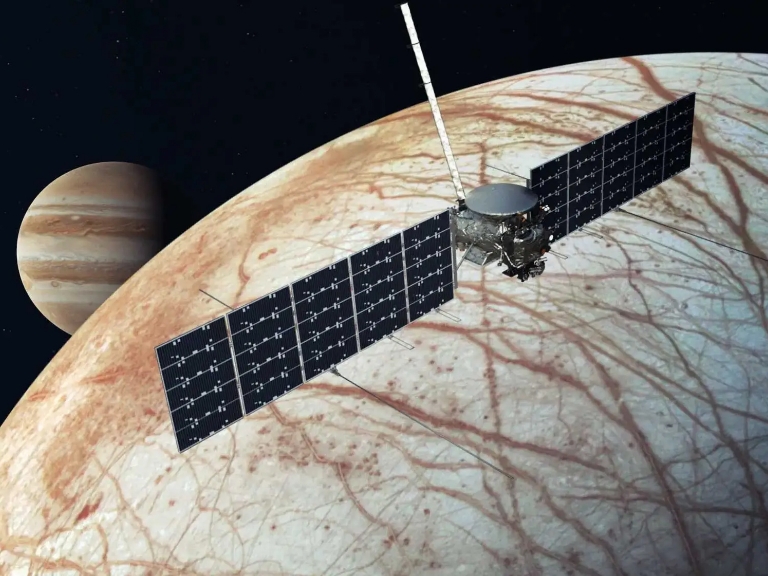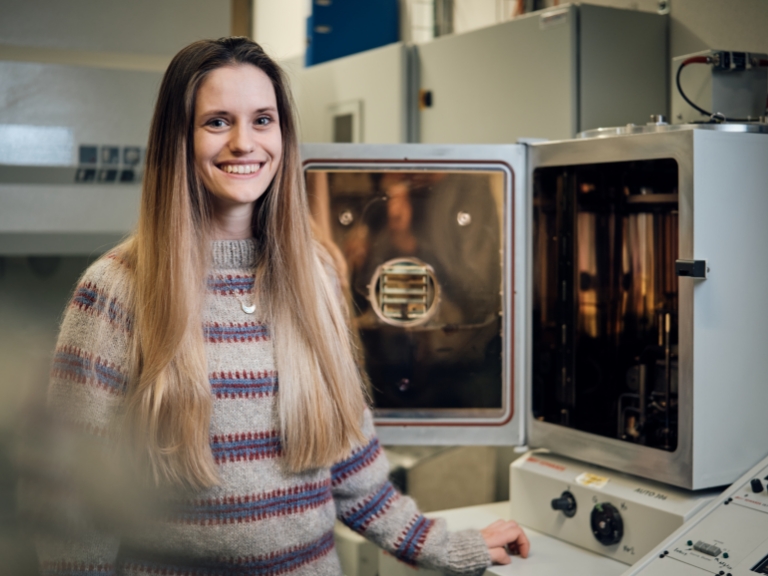The CHEOPS space mission
“What should I definitely not do?”
For more than five years, the Bern-based CHEOPS telescope has been providing highly precise data from space. At the beginning of 2025, Christopher Broeg took over the leadership of the mission from Willy Benz. Now the two have met for a conversation for uniAKTUELL.
CHEOPS is a joint mission of the European Space Agency (ESA) and Switzerland, led by the University of Bern in collaboration with the University of Geneva. Since its launch from the European spaceport in French Guiana on December 18, 2019, CHEOPS has revealed the properties of numerous fascinating planets outside our solar system, known as exoplanets. CHEOPS' precision has exceeded all expectations, and the space telescope has become a key instrument for astronomers in Europe and worldwide. In 2023, ESA extended the mission by three years, with the prospect of a further extension until 2029.
Subscribe to the uniAKTUELL newsletter

Discover stories about the research at the University of Bern and the people behind it.
Willy Benz was Professor of Astrophysics at the University of Bern and, as Principal Investigator, was responsible for the CHEOPS mission. Under his leadership, the space telescope was developed, built and tested at the University of Bern over a period of five years. At the end of 2024, Christopher Broeg succeeded Willy Benz as Principal Investigator. Broeg has been Mission Manager of the CHEOPS mission since 2012 and is now head of the CHEOPS consortium, which involves over 100 scientists from 11 European countries.
A laboratory with a calibration and vacuum chamber that is unique in Switzerland was built at the University of Bern specifically for the development of the telescope. This is where the two space researchers met to discuss the highlights so far and the future of the mission.
About the person

Dr. Christopher Broeg
studied physics at the Technical University of Munich (TUM), did his diploma thesis at the Max Planck Institute for Extraterrestrial Physics (MPE) in Munich and completed his doctorate in 2006 at the Friedrich Schiller University (FSU) in Jena. The aim of his dissertation was to develop a prediction of possible planetary populations around other stars. He came to the University of Bern as a postdoc in 2007. Broeg has been CHEOPS Mission Manager since 2012 and has now succeeded Willy Benz as Principal Investigator.
About the person

Prof. em. Dr. Willy Benz
was the principal investigator of the CHEOPS mission until the end of 2024. He studied physics at the University of Neuchâtel and obtained his doctorate in astrophysics from the University of Geneva in 1984. He then worked at Los Alamos National Laboratory and at Harvard University, where he was an assistant professor from 1987. He then taught at the University of Arizona and the University of Geneva. Since 1997, Benz has been a professor at the University of Bern and, in the meantime, director of the Physics Institute and the National Centre for Competence in Research PlanetS. He was president of the ESO Council of the European Southern Observatory (ESO). Since summer 2024, Benz has been president of the International Astronomical Union (IAU).
CHEOPS – In search of potentially habitable planets
The CHEOPS mission (CHaracterizing ExOPlanet Satellite) is dedicated to characterizing exoplanet transits. CHEOPS measures the changes in brightness of a star when a planet passes in front of it. From this measurement, the size of the planet can be derived and, with existing data, its density can be determined. This provides important information about these planets – for example, whether they are mostly rocky, consist of gases, or have deep oceans. This, in turn, is an important step in determining whether a planet has conditions conducive to life.
CHEOPS was launched into space on Wednesday, December 18, 2019 on board a Soyuz Fregat rocket from the European spaceport in Kourou, French Guiana. Since then, CHEOPS has been orbiting the Earth at an altitude of 700 kilometers along the day-night boundary in approximately an hour and a half.
More information: https://cheops.unibe.ch/
Bernese space exploration: With the world’s elite since the first moon landing
When the second man, "Buzz" Aldrin, stepped out of the lunar module on July 21, 1969, the first task he did was to set up the Bernese Solar Wind Composition experiment (SWC) also known as the “solar wind sail” by planting it in the ground of the moon, even before the American flag. This experiment, which was planned, built and the results analyzed by Prof. Dr. Johannes Geiss and his team from the Physics Institute of the University of Bern, was the first great highlight in the history of Bernese space exploration.
Ever since Bernese space exploration has been among the world’s elite, and the University of Bern has been participating in space missions of the major space organizations, such as ESA, NASA, and JAXA. With CHEOPS the University of Bern shares responsibility with ESA for a whole mission. In addition, Bernese researchers are among the world leaders when it comes to models and simulations of the formation and development of planets.
The successful work of the Department of Space Research and Planetary Sciences (WP) from the Physics Institute of the University of Bern was consolidated by the foundation of a university competence center, the Center for Space and Habitability (CSH). The Swiss National Fund also awarded the University of Bern the National Center of Competence in Research (NCCR) PlanetS, which it manages together with the University of Geneva.



